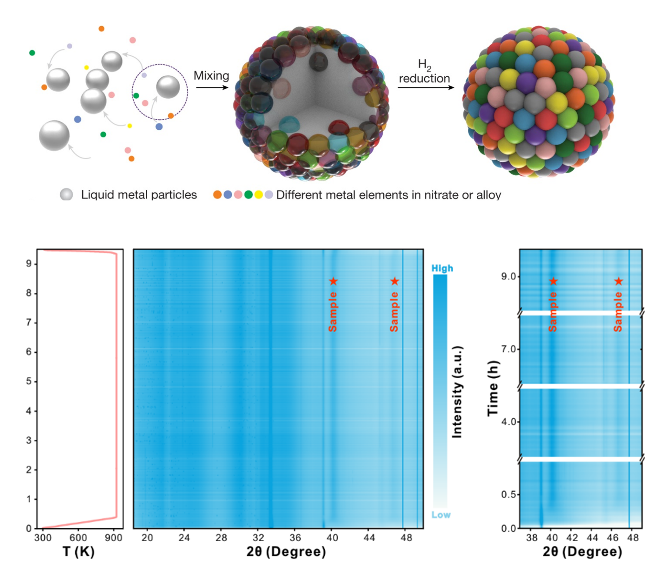Lei Fu's group at Wuhan University has demonstrated that the negative enthalpy of mixing of gallium with other elements can provide stable thermodynamic conditions for nano-alloys.

High-entropy alloyed nanoparticles have great potential as functional materials, but so far, only alloying between similar elements is currently possible due to the great differences in the chemical and physical properties of the mixed elements, resulting in considerable immiscibility during the alloying reaction, which greatly hampers the design of materials, optimization of their properties, and exploration of mechanisms for different applications.
Wuhan University's Fu Lei research group overcame the characterization difficulties in liquid metal environments by overcoming the in situ X-ray diffraction method based on the BL02U2 surface diffraction line station at the Shanghai Light Source, capturing the liquid metal-to-crystalline nanoparticle conversion process in real time, and made a breakthrough by discovering that negative enthalpies of mixing of the liquid metal gallium with other elements can provide stable thermodynamic conditions for alloys, enabling the precise fabrication of nanoparticles with a precisely fabricated structure. The proposed liquid gallium metal-assisted approach allows the formation of homogeneous alloys without separating elements, with high elemental inclusivity under mild conditions, involving elements with a wide range of atomic radii (1.24-1.97 Å) and melting points (303-3,683 K). This finding is expected to open new avenues for the application-specific oriented synthesis of desirable high-entropy alloys in which the elemental compositions can be designed over a wide range. An in-depth study of the reaction mechanism of liquid metals reveals their dynamic evolution, which also inspires liquid metal-based methodologies. The related results were published in Nature with the title “Liquid metal for high-entropy alloy nanoparticles synthesis” (Nature 619, 73(2023))。
附件下载:
